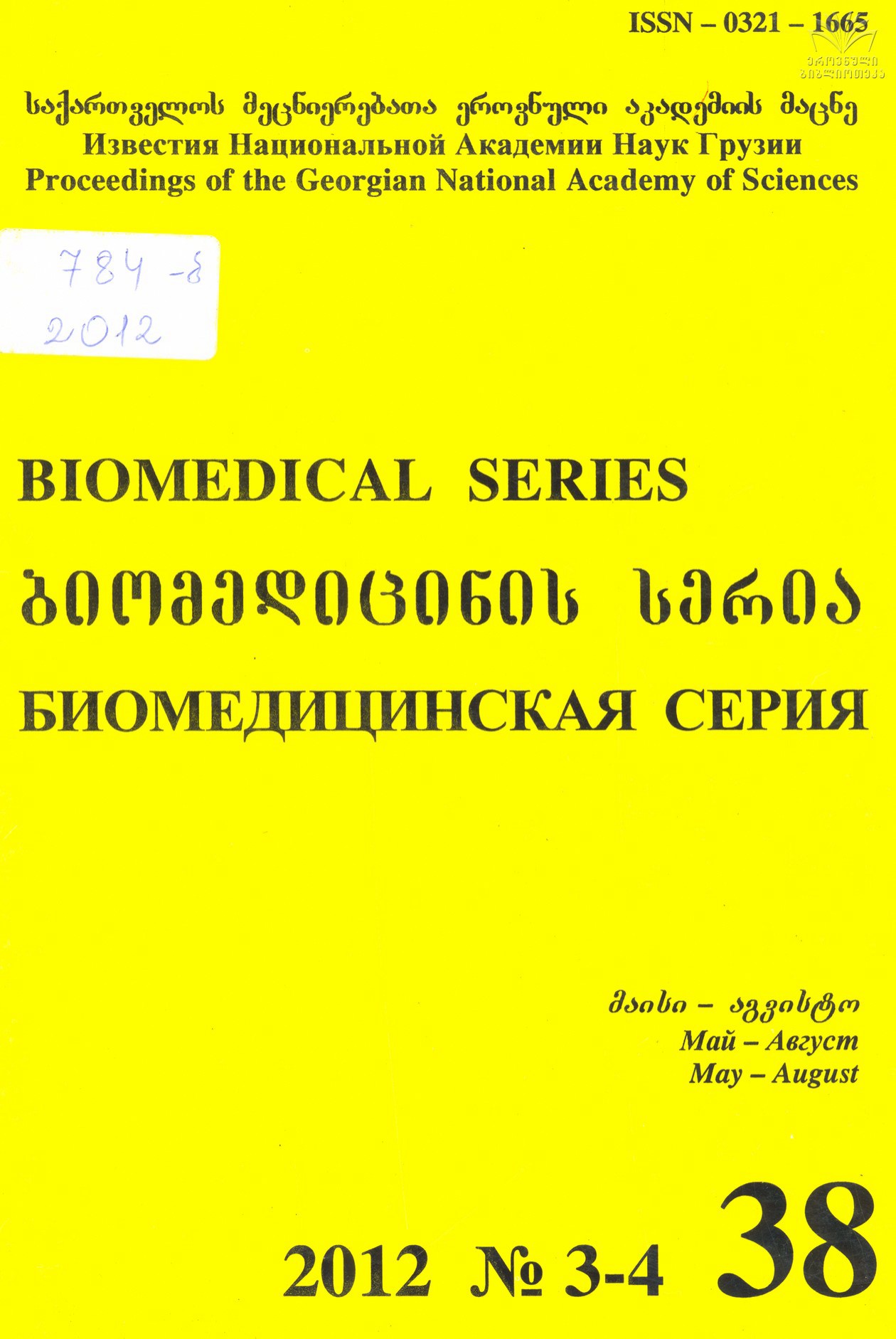Abstract
In 2011 the 100 hospitalized patients with hemorrhagic colitis underwent observation at the Center of Infectious Diseases, Aids and Clinical Immunology Practical-Research Center. The aim of our research was the identification of STEC-strains rate in the structure of hemorrhagic colitis and revealing clinical features of the cases complicated by HUS. STEC-infection was confirmed by the bacteriological, molecular-biological and serological investigations (PCR an ImmunoCard STAT methods) (NCDC) in case of 50 patients. The laboratory results indicate that shiga-toxin producing E.coli is circulating in Georgia. There are not only 0157 but non-0157 strains as well (026, 01 11, 0103, etc.) After revealing the shiga-toxin molecular markers in the stool by the use of the new and modern laboratory researches (PCR and ImmunoCard STAT) the rate of STEC-infection confirmation has significantly increased in comparison with the bacteriological researches (41% vs 19%). STEC-infection was characterized by the severe course of clinical manifestation as compared to hemorrhagic colitis.
Antibioticogram of isolated 11 EHEC strains was studied. The isolation in most cases revealed high resistance and less sensitivity to the following antibiotics: Ampicilin, Cefazolin, Doxycycline, Trimetropim-sulfametoxazol, Cefiriaxone, Ciprofloxacine, Aztreonam Amikacin. It was found out that they had sensitivity to the next antibiotics: lmipenem, Piperacilin-tazobactam, Chlorampenicol, Fosfomycin, Gentamicin.
The complication of STEC-infection by HUS is most often seen in those patients who received antibiotics before admission to hospital. Complications developed in 32% of patients, out of which HUS was revealed more frequently in women with the history of premorbid background (26%) 5 patients required dialysis. Every patient was cured by complex etiological-pathogenic therapy and there were no cases with lethality.
References
მეგრელიშვილი თ. პირობით პათოგენური ენტერობაქტერიებით გამოწვეული ნაწლავთა მწვავე ინფექციების კლინიკური თავისებურებები მოზრდილებში. ავტორეფერატი, 1992, გვ. 10-22
Мегрелишвили, Т. А. (1992). Клинические особенности острых кишечных инфекций. вызванных условно патогенными энтеробактериями, у взрослых.
Bennet W.J. Tarr Р. Enteric Infections and Diagnostic Testing. 2009, 25, 1-7.
Robert Koch Institute (RKI). The epidemiology bulletin of the Koch Institute http://www.rki.de/cln_l69/nn.
Takkinen J. Europian Center for Disease Prevention and Control. STEC 01041114, activities at EU level. Eu, RL, for E. coli, Rome, 4 November, 2011.
Tarr P.l. Gordon CA, Chandlre W.L Lancet, 2008, 365, 1087-1110.
World Health Organization. Available at http://www.who.int/mediacentre/factsheets/fs330/en/index.html
